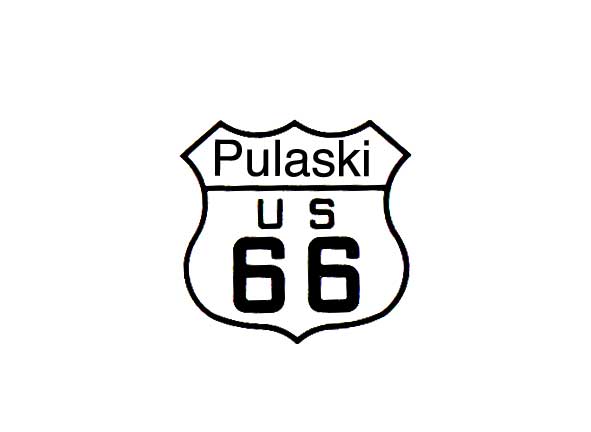
Audio Tour Stop 7
| In January of 1941, construction of Fort Leonard Wood began in earnest. Thirty-two thousand construction workers descended on this rural area in the south-central Ozarks of Pulaski County. Accommodations for the workers was overwhelmed, forcing them to seek shelter from Lebanon to Rolla and beyond. Traffic was jammed most of the time with construction in progress around the clock. Traffic was particularly snarled around the entrance to the camp, both east and west. The Defense Department determined that a four-lane highway was needed to move men and materiel to and from the fort. |  |
| With a plan to expedite traffic by constructing a four lane for several miles on each side of the entrance to Fort Leonard Wood, it would be necessary to cut through the high ridge at Hooker that the old road skirted around. This would have the added benefit of bypassing Devil's Elbow and the narrow bridge with the dog leg approach over the Big Piney River. A new technique for road cuts was employed. The walls on each side were terraced and set back so that falling rocks would hit a terrace or the shoulder. |  |
 |
Steam powered drills penetrated the dolomite, leaving fissure holes that were packed with dynamite and the mountain blown apart. Fred Weber, Jr. Construction moved 186,000 cubic yards of rock, weighing 300,000 tons, and used it for fill in low spots.The depth of the cut was 93 feet. |
| The construction of Hooker Cut was groundbreaking highway engineering. It was the deepest road cut in the U. S. at the time. The four-lane highway was divided by a median strip and the lanes were three feet wider than the old road. The gutters diverted water into culverts for efficient run-off. It certainly moved traffic faster - and bypassed the old community of Hooker and the businesses that had been there since the early days of Route 66. This was the first four-lane stretch opened on Route 66 in Missouri and the last closed. |  |
 |
The only Hooker business to survive the bypass was that of the Wells family. After a fire at Wells Station, a new souvenir store was built on the new four-lane. It was named Sterling's Hillybilly Store, marketing the hillbilly stereotype. There was also a mule hitched to a wagon in front of the store with a sign that said "Feed Me." Many parents were pestered into stopping at Sterling's to feed the mule. It did a booming business until the early 1980s when I-44 bypassed the Hooker Cut stretch. |